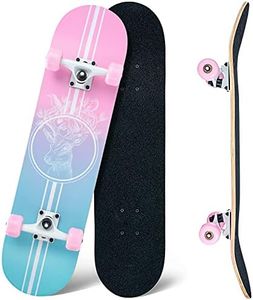We Use CookiesWe use cookies to enhance the security, performance,
functionality and for analytical and promotional activities. By continuing to browse this site you
are agreeing to our privacy policy
10 Best Beginner Skateboard For Teens
From leading brands and best sellers available on the web.Buying Guide for the Best Beginner Skateboard For Teens
Choosing a skateboard for a beginner teen is all about finding a board that makes learning safe, comfortable, and enjoyable. Focus on basics that help with balance, easy turning, and durability. Think carefully about the type of skating your teen wants to do—whether it's cruising, learning tricks, or just rolling around with friends. This will help you match the skateboard's features to your teen's needs.Deck WidthDeck width refers to how wide the board is from side to side. This is important because it affects balance and control. Wider decks (usually 8.0 inches or more) give more stability, which is great for beginners and for cruising. Narrower decks (between 7.5 and 8.0 inches) are lighter and easier to flip, which suits those interested in tricks. For most beginner teens, starting with a deck around 7.75 to 8.0 inches wide strikes a good balance between stability and maneuverability, making it easier to learn basic skills.
Deck MaterialMost skateboard decks are made from layers of maple wood, but some are built using bamboo or composite materials. The deck material matters because it impacts the strength and flexibility of the board. Maple is commonly chosen for its durability and pop, which means a good feel when learning tricks. Bamboo is more flexible and eco-friendly, while composites can be lighter and more durable. For beginners, maple is a solid, reliable choice that will hold up to early learning and the inevitable mishaps along the way.
Truck SizeTrucks are the metal T-shaped pieces that attach the wheels to the board, and their width needs to match the deck width. Trucks that are too wide or too narrow can make the skateboard feel unstable or difficult to turn. Generally, the axle width should be close to the width of the deck for best performance. For example, an 8.0-inch deck should have trucks around the same width. Beginners should look for trucks that come pre-matched with the deck, or double-check the measurements if buying separately.
Wheel Hardness (Durometer)Wheel hardness, measured by a durometer rating, affects how the skateboard rolls and grips different surfaces. Softer wheels (with lower numbers, like 78A to 87A) are better for rough surfaces and smooth rides but roll slower on smooth pavement. Harder wheels (with higher numbers, like 99A and up) are faster and more responsive on smooth surfaces, making them better for skateparks and tricks. Beginners often benefit from slightly softer wheels, which help absorb bumps and make learning smoother and safer, especially when skating outdoors on typical sidewalks.
Wheel SizeWheel size is measured in millimeters (mm) and impacts how quickly the skateboard accelerates and how smooth the ride feels. Smaller wheels (50-54mm) are good for technical tricks and skateparks, while larger wheels (55-60mm or more) are better for cruising and rougher ground. For most beginner teens, wheels in the 52-54mm range offer a nice balance: they're stable enough for cruising but small enough to start learning some tricks.
Grip Tape QualityGrip tape is the sandpaper-like layer on top of the deck that helps shoes stay on the board. Good grip tape is crucial for beginners, as it keeps their feet stable while learning to balance and perform simple moves. Most skateboards come with grip tape already applied, but it's worth checking that it's applied smoothly and offers a solid, grippy texture. For most beginners, standard grip tape will do the job just fine, as long as it's not peeling or bubbling.
Board Shape (Concave and Nose/Tail)The shape of a skateboard deck, including how much it curves up on the sides (concave) and how the nose and tail are angled, influences how easy it is to control the board and learn tricks. More pronounced concave helps with tricks and foot placement, but can feel unstable for total beginners. Milder concave and standard shapes make the board easier to control and turn, which is helpful when just starting out. Beginners often find it easier to learn on decks that aren't too steeply shaped, offering comfort as they gain confidence.

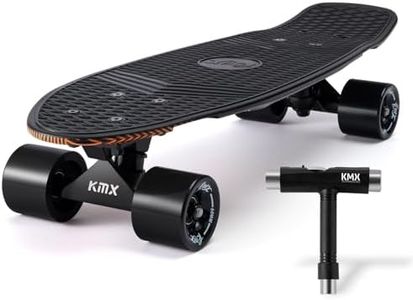
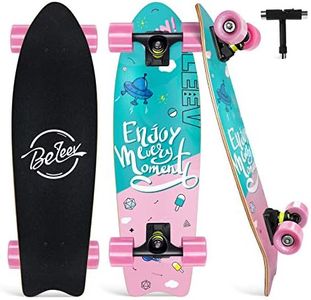
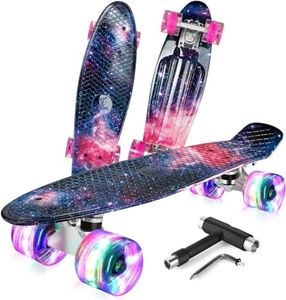
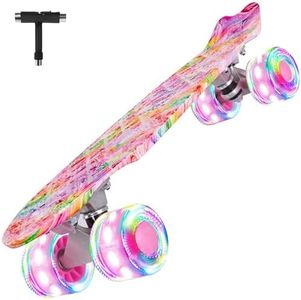
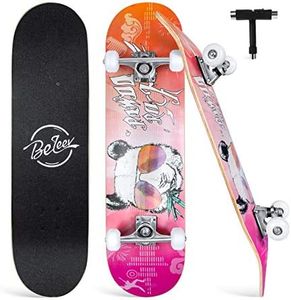
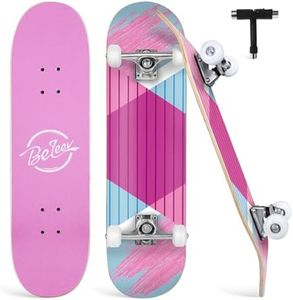
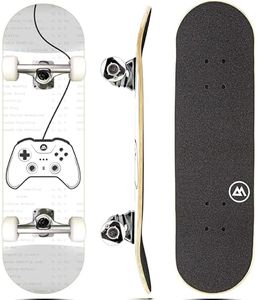
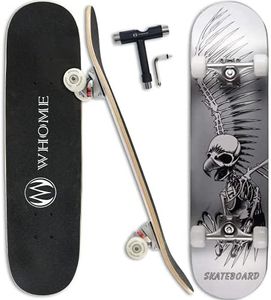
![[CCS] Globe Skateboard Complete Cream 7.75"](https://images-proxy.bestreviews.guide/uP46258yGXCxqeMw3oqnunpun-8=/0x300/https://m.media-amazon.com/images/I/41MvZ9MCQRL._AC_CX679_.jpg)



